2016 Alaska Voyage
We continue to cruise
TAMARA as actively as
we possibly can each season. In the years that we have been back
from our extensive time cruising from the Labrador Sea to Patagonia
and Antarctica, then finally home to Alaska, about half of each year
has been devoted to preparing, provisioning, maintaining and cruising
the boat which has so faithfully served us for so many years and
miles.
One benefit of being back
in the cold waters of Alaska is that TAMARA
requires much less frequent haul-outs for
routine bottom cleaning and painting. However the flip side of that
benefit is the greater difficulty in doing such work in a place where
the weather can often be less than cooperative. Our maintenance
schedule would require that a part of this season’s time would have
to be devoted to this effort. But first there would be time for yet
one more late winter cruise in one of the most spectacular maritime
regions, where mountains and glaciers meet the sea, and where winter
is usually a time of particularly great beauty and unique adventure
aboard a cruising sailboat.
Mark devoted a good
portion of the fall and early winter at home in Port Townsend to
ordering, re-packing and arranging shipment aboard a friend’s
fishing boat of all of the maintenance items, new gear and so on that
would be required to conduct the quadrennial haul-out project. In
addition, we planned a remote wilderness canoe trip in Canada’s
Yukon Territory that we intended to undertake in September as we made
our way homeward. This required some new camping equipment to
supplement gear that we’d owned and used for decades. In part this
was to assure greater comfort for an extended trip, and was easily
accomplished as a canoe can readily accommodate a very substantial
amount of equipment. Included in the preparations was arranging to
purchase an excellent used voyaging canoe from one of the commercial
outfitters in Whitehorse at the close of their normal season, and
figuring out how to get everything to the right place at the right
time
In late February Mark left
Port Townsend in our Subaru Forester loaded with as little gear as
possible for the 2250 mile Alaska Highway drive to Valdez to meet the
ferry to Cordova. Of course “as little gear as possible” meant a
very substantial amount of equipment for the remote drive, such as
Arctic winter clothing, footwear, sleeping bag, camp stove, tire
chains, axe, shovel etc., as well as all of the parts, equipment and
doodads that had been acquired in addition to the great bulk of stuff
had been loaded aboard Stewart Deal’s seine boat DEFIANCE.
Without such help almost every season we
would have a very difficult time getting all of the things that such
adventuring requires, and for this we are grateful for the friends
that we have that are still active in Alaskan fisheries.
Recent years have
undergone a very rapid and steady decline in what once were normal
winter conditions, both on the drive north, as well as in Prince
William Sound. On Mark’s 2012 solo winter cruise, record snowfall
had made the Sound a winter wonderland, and required the assistance
of the military to keep Cordova functioning. But in each of the
years since, winter had become shorter and shorter, with snowfall
diminishing progressively over time. Generally on the drive north,
extremely low temperatures render even snow-packed roads safer as the
hard-pack takes on an almost concrete-like quality. No thin layer of
water develops on top to create the very slippery conditions common
on more temperate highways. But in recent years there had been
either no snow pack at all, or the dreaded warmer temperatures that
result in the more treacherous driving conditions
The oil dependent Alaska
state budget situation further complicated this season’s trip.
Following the opening of a highway tunnel from the western Prince
William Sound port of Whittier, most full-time Cordovans utilize the
ferry to get to the city of Anchorage via that shorter route, rather
than landing in Valdez and making the longer drive. To adjust to
budget cuts, the ferry system has therefore made the Valdez/Cordova
run a lower priority. As a consequence the boat to and from Cordova
and Valdez now generally takes a very long triangular route by way of
Whittier, turning what used to be a seven-hour trip into fourteen!
Fortunately the scenery is spectacular, the ferry warm and
comfortable, and there usually is someone aboard whom we know to talk
with.
Generally it takes ten
days or so to commission, fuel and provision TAMARA
for her winter cruise. This includes
removing the special shrink wrap material that serves as a winter
covering, bending on the sails, refitting the anchor that had been
removed to accommodate the harbor snow removal crews, getting engine,
generator and other mechanical systems functional, and laying in
fuel, provisions and water, which requires some effort in the winter.
However this season the exceptionally mild winter, and historically
low snow-pack made most of these chores relatively easy.
The cruise itself was much
less satisfying than it would have been with a more normal winter.
After all it is winter itself that is the objective of a “winter
cruise”, and this year there was not only no snow at all below
1,500 feet elevation but the ground itself was not even frozen! No
skiing, snowshoeing or any other winter activity was possible, and
even hiking ashore was not facilitated by firm ground. With luck
this coming winter will bring more normal conditions.
Perhaps the most
challenging episode of the winter cruise occurred early on when a
strong winter gale resulted in TAMARA
dislodging her anchor while waiting for
better conditions at Naked Island. This required some tricky work
for Mark as a single-hander. His reflections on seamanship,
techniques, equipment, and training and experience resulted in a
piece to be published as a two-part installment featured in Cruising
World magazine this coming spring.
Following the “winter”
cruise, Mark returned to Cordova to undergo the annual SERVS oil
spill response training, and then re-provisioned TAMARA
in preparation for Nancy’s arrival in early
May. The weather was exceptionally fine, and the harbor
exceptionally busy, in part due to an ill-timed road construction
project at the busiest time of year for the salmon fleet. So we
simply decided to forgo the necessary maintenance haul-out until the
end of the season, and got away from the bustle as quickly as we
could.
As we would have to do the
maintenance work, we had not planned to range far a-field, remaining
in the Sound instead of venturing westward for the eastern Aleutian
Island area. So to make the cruise more interesting, and a little
more challenging, we tried to visit as many places in the Sound that
we had not been before as we could. However even in the 7,500 square
miles of cruising afforded within Prince William Sound there are
becoming fewer and fewer anchorages that we have not used at one time
or another.
The fine weather however
allowed us to more easily paddle, row or hike, so we were able to
thoroughly enjoy even the less challenging cruising. At times we
sought out the company of other, usually foreign flagged, cruising
boats, while sometimes we ventured to where we knew there would
likely not be any other boats at all. Part of this search took us to
very secluded anchorages in which it would be possible to secure the
yacht with lines ashore, possibly even in winter. This effort
continues to give us very detailed information, with our notes
containing soundings, water sources, mooring plans and so on in order
that we can safely secure TAMARA
for an extended period. This is essential, particularly on the
winter cruises in order to be able to leave the boat for any period
of time.
Our cruise took us to the
foot of a few of the Sound’s spectacular glaciers, to secluded
anchorages from which we could roam ashore, lagoons completely
sheltered from even the generally quiet waters of the Sound, and to
locations where much of Cordova’s fishing fleet were concentrated
for salmon season. In all this cruise was quite relaxing - although
at times we missed a few of the challenges of our more ambitious
western voyages. As we had ample time available, and had never done
so during the busy summer tourist season, we decided to visit the
small port of Whittier. Originally constructed to be only a
temporary WWII supply terminal, Whittier has become a major cruise
ship point of embarkation, with tourists traveling into Alaska's
interior by bus and train.
An annual summer festival
called Salmon Jam takes place in July in Cordova, but we’d never
been in town at that time of year, as cruising had kept us far from
town. This year, with our less extensive cruise and our need to
return to port for the maintenance haul-out we made it a point to
fully partake of both days of the festival. Great food, music and of
course good beer made for a fine time up on Cordova’s ski hill.
Nancy served as a volunteer for the event, while Mark got to see old
friends that generally do not arrive in town until after our usual
departure.
Work on the haul-out
progressed pretty smoothly. The town’s new lift and excellent
harbor staff greatly facilitate such a project, and the excellent
skilled tradesmen and commercial chandleries make a fishing port like
Cordova the ideal place for boat maintenance work. In all, we
applied three coats of anti-foulant paint, replaced sacrificial zinc
anodes, replaced the mechanical propeller shaft seal, installed a new
depth sounder transducer, and performed some welding work. All
routine but essential work.
Just before completion of
the yard project, Nancy flew south to embark on yet another section
of her Pacific Crest Trail hike. She has now completed about two
thirds of the entire distance. See link to her hiking blog. When
she had completed this season’s PCT hike she returned to Cordova,
and we loaded up the Subaru with all of the gear for the canoe trip!
On our road trip two years
ago to the Arctic Ocean via Canada’s Dempster Highway and the
Mackenzie River Valley, we crossed and re-crossed a number of
important historic canoe routes that had been used both by
pre-European First Nations peoples, and later by the Voyageurs of the
fur trade. This gave Mark the idea to once again return to canoeing
as a way to enjoy wilderness travel. He too had done a great many
miles as a hiker, but severe back injuries have ended that means of
travel. Even though he has some difficulty walking, paddling would
allow us to get deep into the wild. In addition, a good canoe can
carry a tremendous load of equipment and provisions, making for quite
comfortable camp living.
Mark had arranged to buy a
used Old Town Discovery canoe from one of the Whitehorse, Yukon
Territory commercial outfitters. He'd had extensive canoeing
experience growing up, had taught in a summer camp, had done some
paddling in western Alaska 40 years ago, but had not been in a canoe
since. Nancy paddles her kayak in every one of our summer
anchorages, but had no canoeing experience. Mark would have to teach
her a few essential strokes and techniques, but was confident that
she would quickly master working the boat on the river. Coupled with
both of us having many years of wilderness travel experience, Mark’s
experience in canoes and good woodcraft, we felt ready for a remote
river trip.
The fourteen hour ferry
trip from Cordova to Valdez got us ashore just before dark. So we
drove directly to a public campground a few miles from town, set up
our camp, and put off shopping for fuel and provisions until the next
morning. Then we set out for Whitehorse, about 650 miles to the
southeast.
In Whitehorse we made a
very short stop at Kanoe People, an outfitter business very well run
by a First Nations family, loaded our boat with the help of the
daughter of the proprietor, and headed directly to the enormous
supermarket in town to provision. Three days later, after sorting
through the equipment and provisions, working out a packing scheme,
and driving 125 miles on the very primitive Canol Road to where a
WWII Bailey Bridge crosses the Rose River, we unloaded the canoe and mountain of gear. The road had been built
specifically to construct a small pipeline to supply military needs
at Whitehorse during WWII, and has been changed very little since.
Some of the original equipment, abandoned at completion, remains
today. Our plan was to take the Rose to the Nisutlin River which
flows all of the way south to Teslin Lake, near the town of Teslin on
the Alaska Highway.
However we had no way to
get the Subaru back south to our end point, then return to the Rose
River Bridge to start paddling. Our error in planning was that only
a few days earlier it was both Labour Day in Canada, and the opening
of the moose-hunting season. Had we initiated our trip then, it
would have been easy to drive the car down to Teslin, then hitch-hike
back up the Canol Road with one of the hunters. But a few days
later, hunters were all southbound, and no traffic was bound for the
Rose.
We decided to cast fate to
wind, unloaded the canoe, and gear, and parked the Subaru at
the Rose River bridge, hoping that all would work out and that we
could retrieve the car without chartering a helicopter!
A few days down the river
we camped at the only place along the route that the river came
anywhere near the road. There we met another paddler, Rick
Flewelling, a very intrepid 73 year-old who spends about five months
every season solo paddling in the North. He was southbound, but
offered to give Mark a ride the two hours back north on the muddy
road where he could retrieve the car. After the four hour round trip
we shared a dinner together with Rick who regaled us with tales of
his 50 year career delivering sailing vessels throughout the world.
Our common experiences as mariners, sailors and paddlers made for a
very entertaining evening, even though it was raining heavily.
Fortunate to have been
able to retrieve the car, and armed with the knowledge of how to
solve the transport logistics by embarking a few days earlier, we
decided to load up the canoe and make our way slowly home, camping
and paddling on some of the many lakes and traditional canoe routes
in British Columbia along the way. This included an extended camp on
Stuart Lake, site of the Fort St. James National Historic site. But
we plan to return to the Rose River Bridge next Labour Day and try
again. If Rick can do it at 73, we can do it five years his junior!
Early in the 1800’s the
critically important fur trade in Canada had been pushed far to the
west. This trade was controlled by two rival companies, the iconic
Hudson Bay Company, and the North West Company. Searching for new
sources of trade, both sent explorers deep into the wilderness to
scout new transportation routes, make contact with native peoples,
and establish trading posts. In 1805 Simon Fraser led an expedition
over the Rocky Mountains to investigate the fur trade potential of
the Pacific slope. After spending the winter at McLeod Lake, Frasier
and his subordinate James MacDougal established a post on Sturgeon
Lake, later re-named for company clerk John Stuart. It would become
the most important British Columbia post, serving essentially as the
capitol of New Caledonia for many years. The two rival firms merged
in 1821, and the post thereafter would operate under the auspices of
the Hudson Bay Company - a firm that traces its linage to 1670 and
continues in business throughout Canada to this day.
Mark has studied, written
and lectured on the Pacific Northwest Maritime Fur Trade, including
at our Mystic Seaport Museum shows a few years ago that detailed our
voyages in the wake of those entrepreneurial sailors. He was most
impressed by the knowledge and presentation of the young woman who
served as our interpretive docent on our tour of the post. The two of
them continued to talk well after the end of the tour! In contrast to
an earlier visit 20 years ago, the present staff are now truly
experts.
By the end of September we
were once again home, feeling much like the Canada geese we’d seen
all along the way making the same migration that we do each season.
Soon late February will come once again, and the cycle will be
renewed.


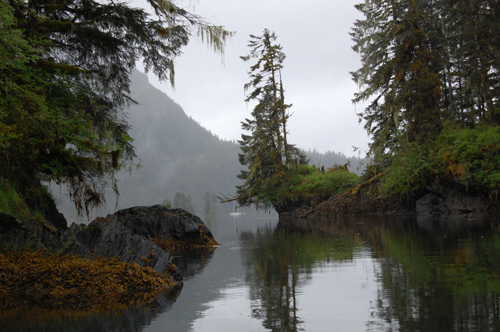

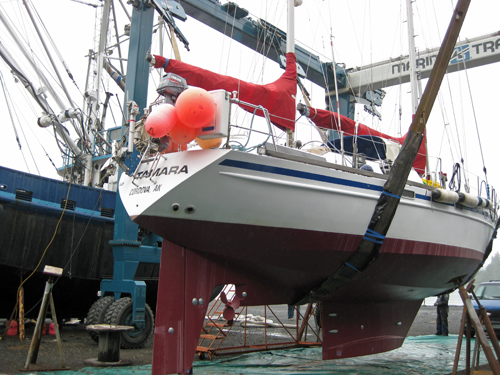

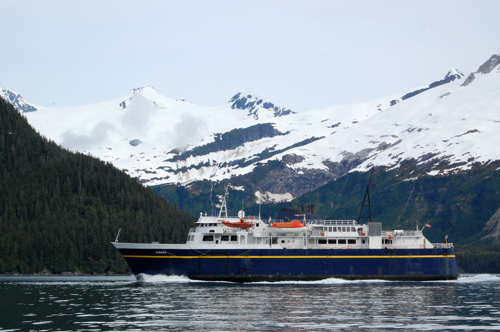
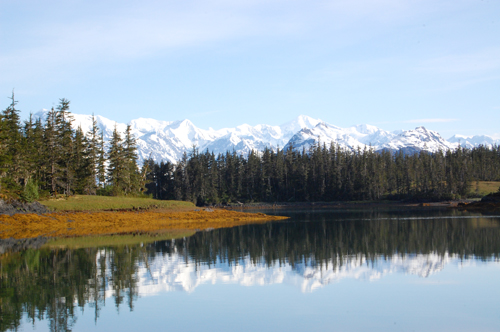
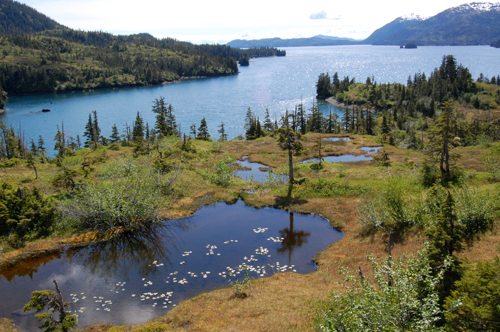
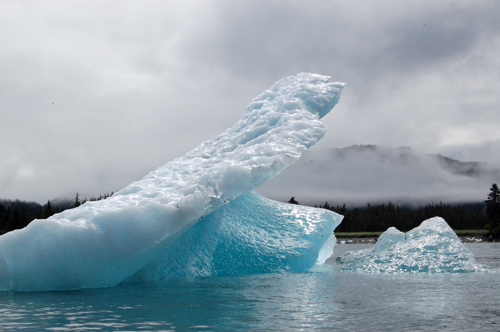
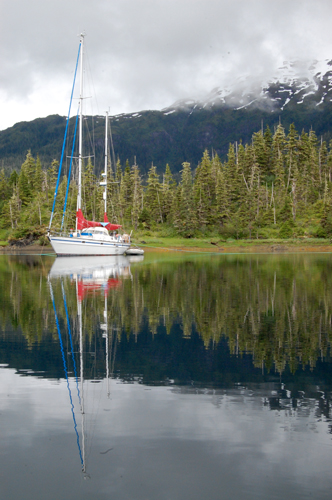
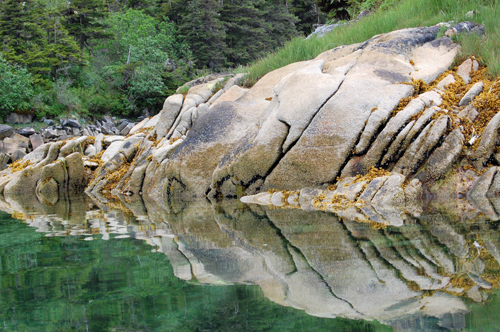
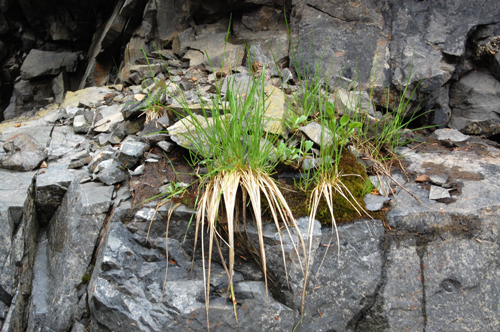
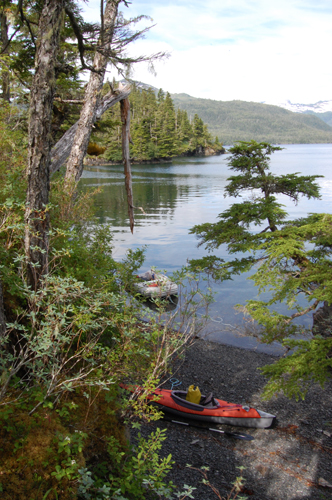
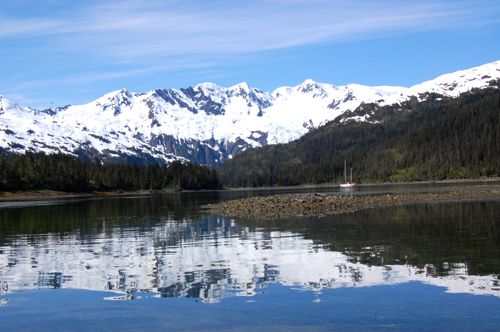
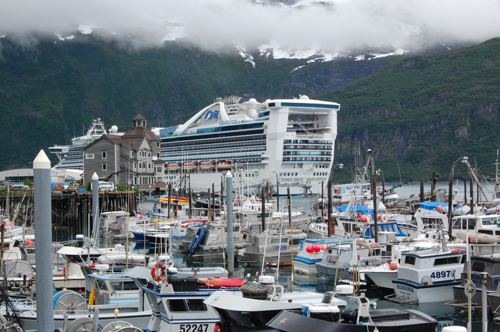
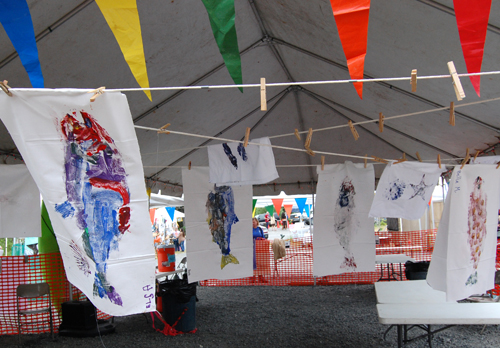
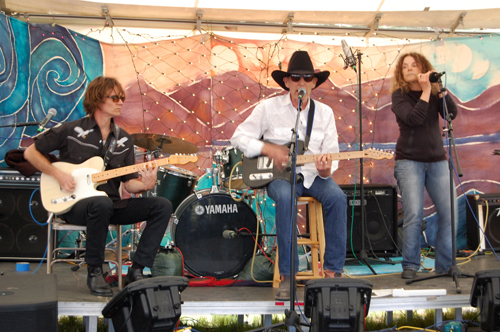
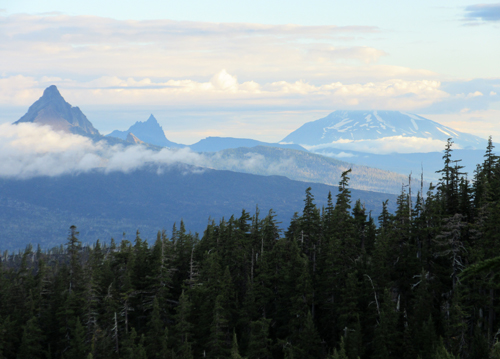
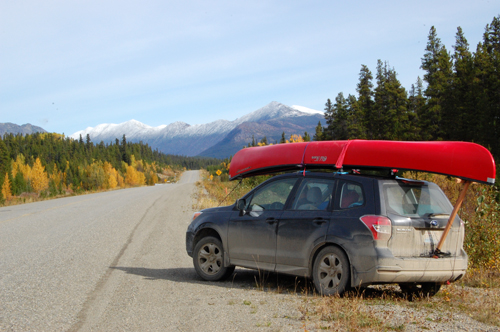
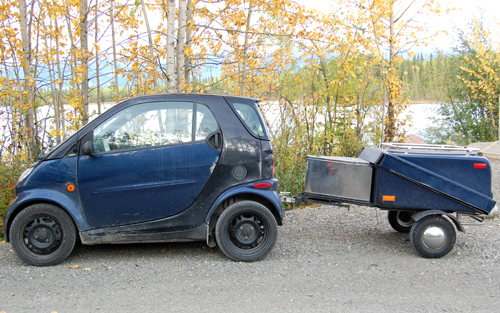

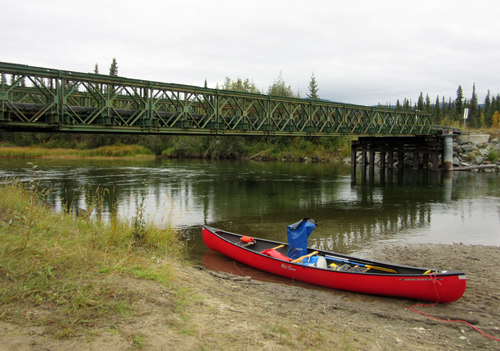
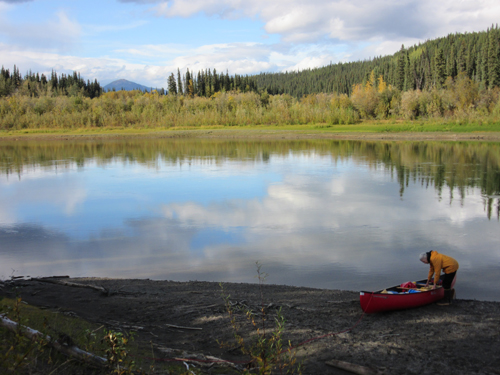
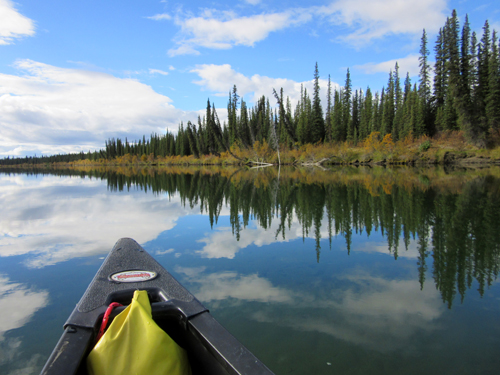
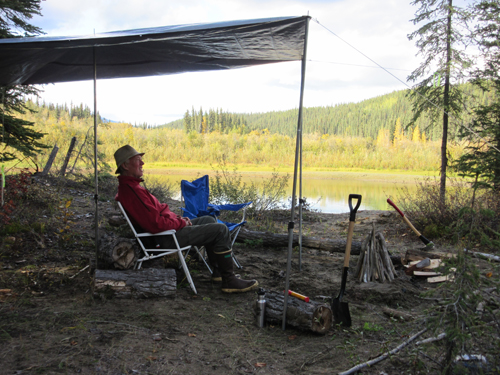
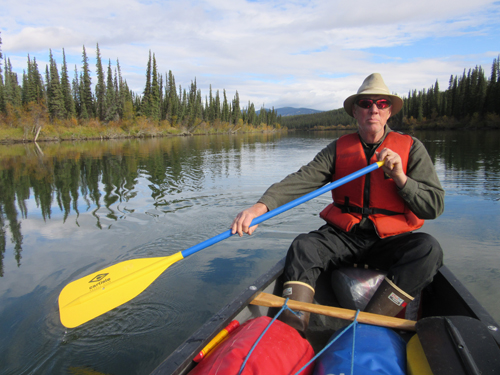
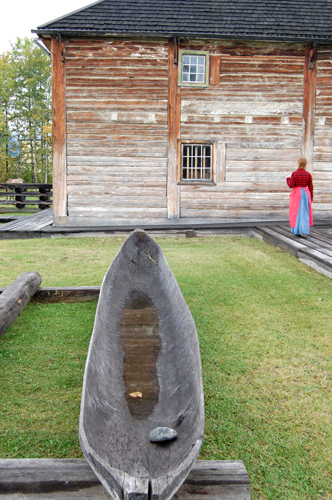
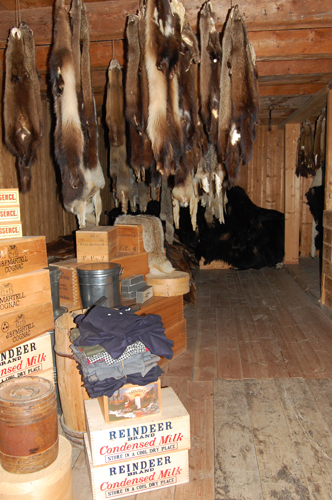
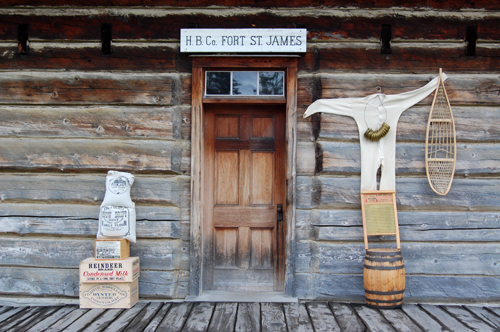
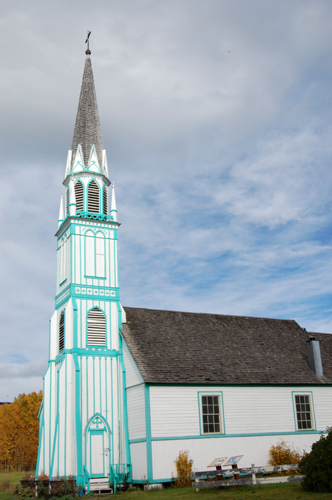
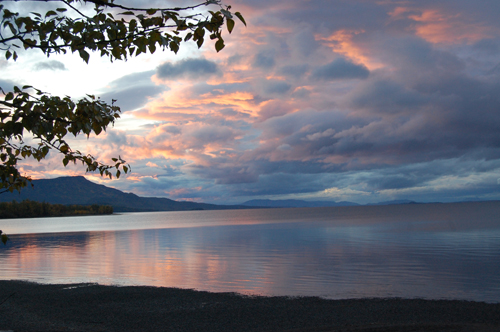

0 Comments:
Post a Comment
<< Home